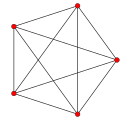| 152 honeycomb | |
|---|---|
| (No image) | |
| Type | Uniform tessellation |
| Family | 1k2 polytope |
| Schläfli symbol | {3,35,2} |
| Coxeter symbol | 152 |
| Coxeter-Dynkin diagram | |
| 8-face types | 142 151 |
| 7-face types | 132 141 |
| 6-face types | 122 {31,3,1} {35} |
| 5-face types | 121 {34} |
| 4-face type | 111 {33} |
| Cells | {32} |
| Faces | {3} |
| Vertex figure | birectified 8-simplex: t2{37} |
| Coxeter group | , [35,2,1] |
In geometry, the 152 honeycomb is a uniform tessellation of 8-dimensional Euclidean space. It contains 142 and 151 facets, in a birectified 8-simplex vertex figure. It is the final figure in the 1k2 polytope family.














